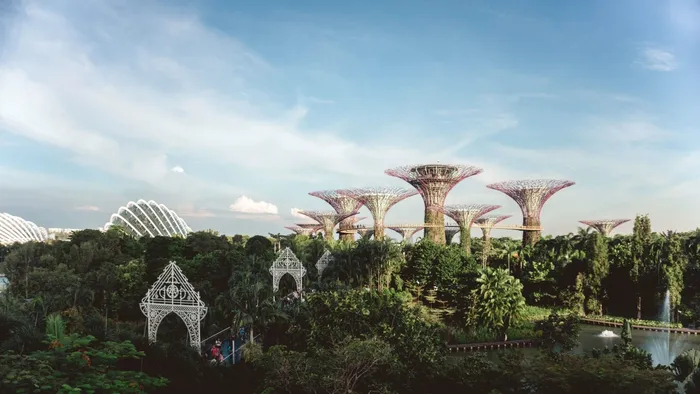Use our google maps link to get the route: https://www.google.com/maps/di...
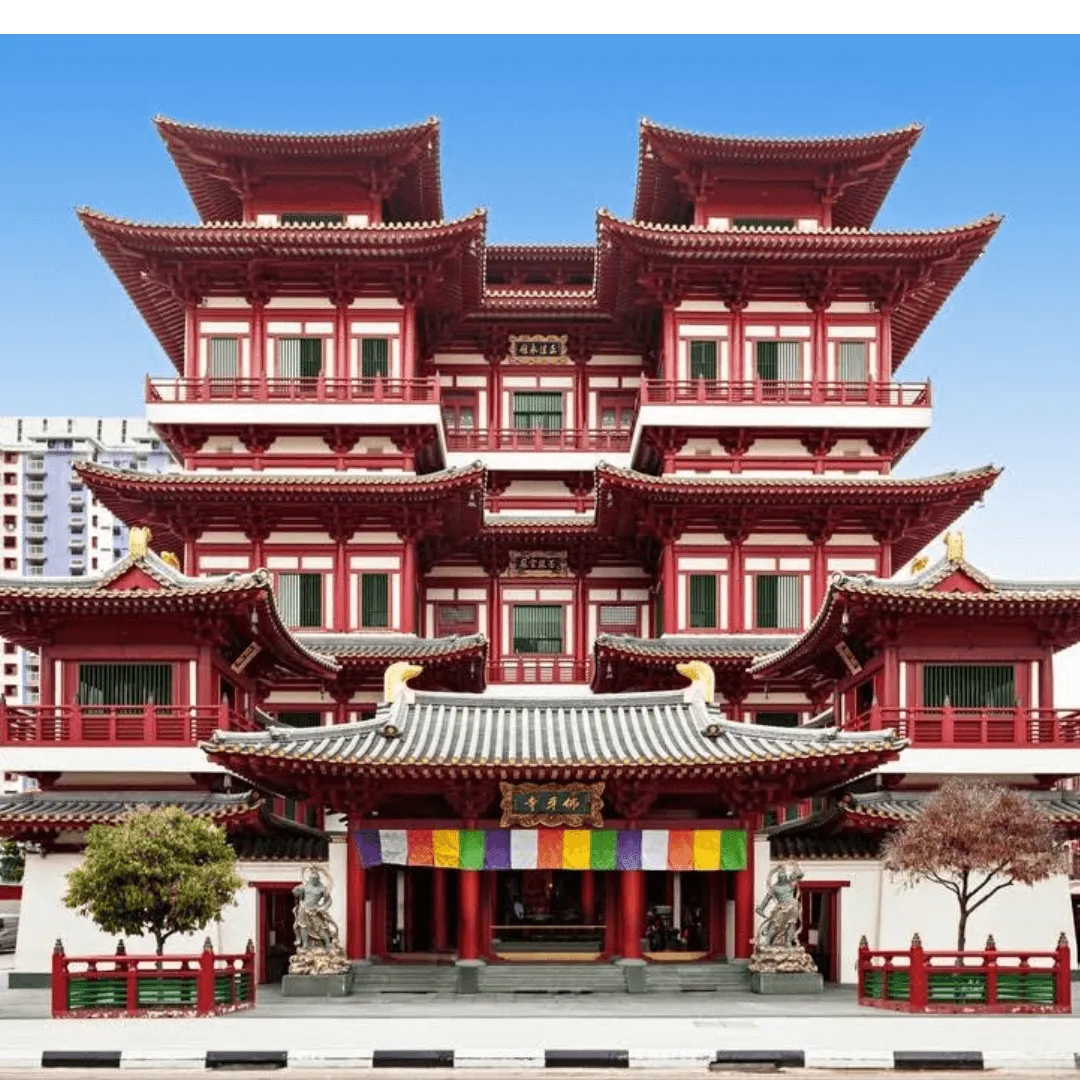
Stop 1: Buddha Tooth Relic Temple & Museum
This unique cultural landmark in Chinatown is highly regarded by local Chinese. There are Buddha statues in the back, each representing a specific constellation, but Maitreya Bodhisattva is the star of the main hall, and the wooden Buddha statue here is believed to be 1,000 years old. One of the floors of the temple is filled with statues, including a statue of Guanyin, the Chinese Bodhisattva, goddess of mercy, mercy and kindness. The mezzanine contains life-size wax figures of the temple`s current and past leaders, with such level of detail (even the wrinkles on their hands!) that rivals wax museums around the world. There is also a balcony here that overlooks the huge main prayer room on his ground floor below the curtain. Finally, on the fourth floor is the temple's ultimate treasure, the Sacred Tooth Relic Stupa, which is said to contain the tooth of Gautama His Buddha himself, discovered in a Burmese monastery in 1980. Another highlight inside the temple is the rooftop orchid garden. An ideal place to reflect before hitting the streets of Singapore's Chinatown again.

Stop 2: Smith Street in China Town
Singapore`s Chinatown has eateries of various sorts which are particularly diverse in the heart of the area, right on and around South Bridge Road. A few touts on Smith Street will try to lure you into some foreigner-friendly restaurants, all decent enough if not the best in their class, and varied enough to eat something different every day for a few weeks. So if you want a great selection of different Asian cuisines, head to Smith Street and dine your way around South East Asia with ease. There are several tea shops, craft beer stalls, and many other Chinese shops set in the historical shop-houses, and you will also be able to buy a Durian fruit here or taste Durian ice cream if you're feeling adventurous.

Stop 3: Sri Mariamman Temple
Singapore`s oldest Hindu shrine, the Sri Mariamman Temple, is easily identified by the superb entrance “gopura” bristling with brightly colored deities. Once inside, look up at the roof and you will see splendid friezes depicting a host of Hindu deities, including the three manifestations of the supreme being: Brahma the creator, with three of his four heads showing; Vishnu the preserver, and Shiva the destroyer, the latter holding one of his sons. The main sanctum, facing you as you walk inside the temple, is devoted to Mariamman, a goddess worshiped for her healing powers. Smaller sanctums dotted all around the temple`s walkway honor a number of other deities. In the one dedicated to the goddess Periachi Amman, a sculpture portrays her with a queen lying on her lap, whose evil child she has ripped from her womb, which is most interesting given that Periachi Amman is the protector of children, to whom babies are brought when they're only one month old. To the left of the main sanctum is a patch of sand which once a year, during the festival of Thimithi (in October or November), is covered in red-hot coals that male Hindus run across to prove the strength of their faith.
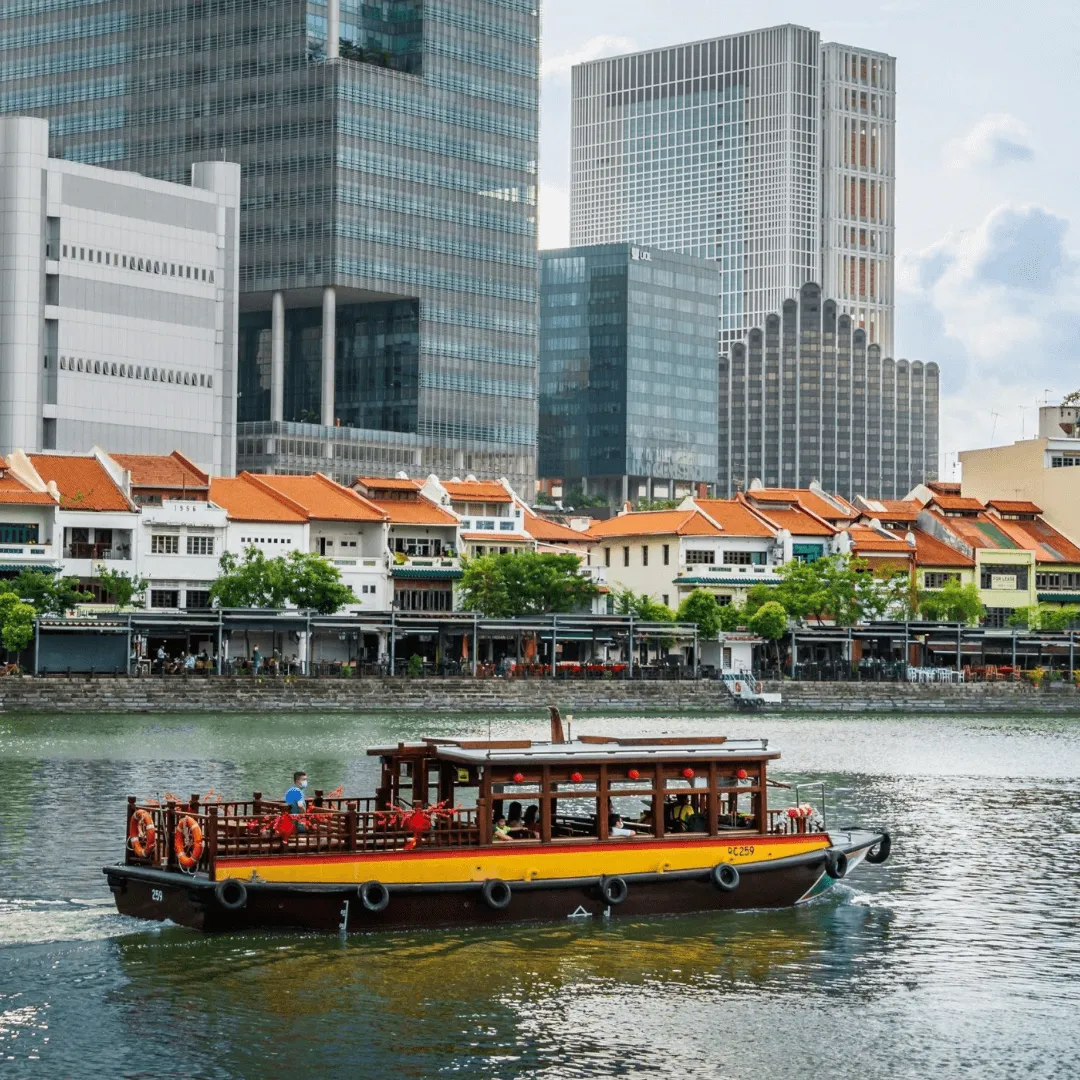
Stop 4: Boat Quay
Because the southern part of the river resembles the belly of a carp, which according to Chinese belief is where wealth and prosperity lay, many shop-houses were built in the area, making it quite crowded. Although maritime trade is no longer Boat Quay's primary role, the shop-houses here remain and now, carefully conserved, accommodate colorful restaurants, bars and shops of various sort. Thus the area's social-economic role has shifted towards tourism seeing the commercial zone enclose the Singapore River. It is here, in the Boat Quay, that you will find the most atmospheric riverfront restaurants serving all manner of Singaporean delicacies. Before ordering food in the Boat Quay, just make sure to ask about the price or pre-agree it, as many things here are charged per 100 grams and you may end up paying exorbitant prices at some restaurants!

Stop 5: Asian Civilisations Museum
The robust former Empress Place Building, located at the mouth of the Singapore River, is one of the city`s architectural treasures – elegantly proportioned and symmetrically laid out, adorned with many decorative features, such as exquisite plaster mouldings, architraves, and cornices. Completed in 1867 and named after Queen Victoria, it still wears the original Neoclassical Palladian exterior, despite having undergone a series of renovations and extensions, featuring same Roman Doric facade for the principal storey with pitched clay tile roofs, arcaded verandahs and timber-louvered French windows that used to keep the interior cool and well ventilated in Singapore`s tropical climate before air-conditioners were installed and which caught the attention of many migrants sailing into Singapore harbor over the years. The Chinese influences are also well represented, from tomb remains to ceramics over a thousand years old that have been recovered from a shipwreck found in 1998. The museum also has a restaurant, called “Empress”, serving traditional Chinese cuisine in a contemporary waterfront setting, plus a cafe, called “Privé ACM”, where you can relax at the alfresco area, enjoying view of the Singapore River and the city's business district skyline.
Opening Hours:
Sat-Thu: 10am-7pm
Fri: 10am-9pm
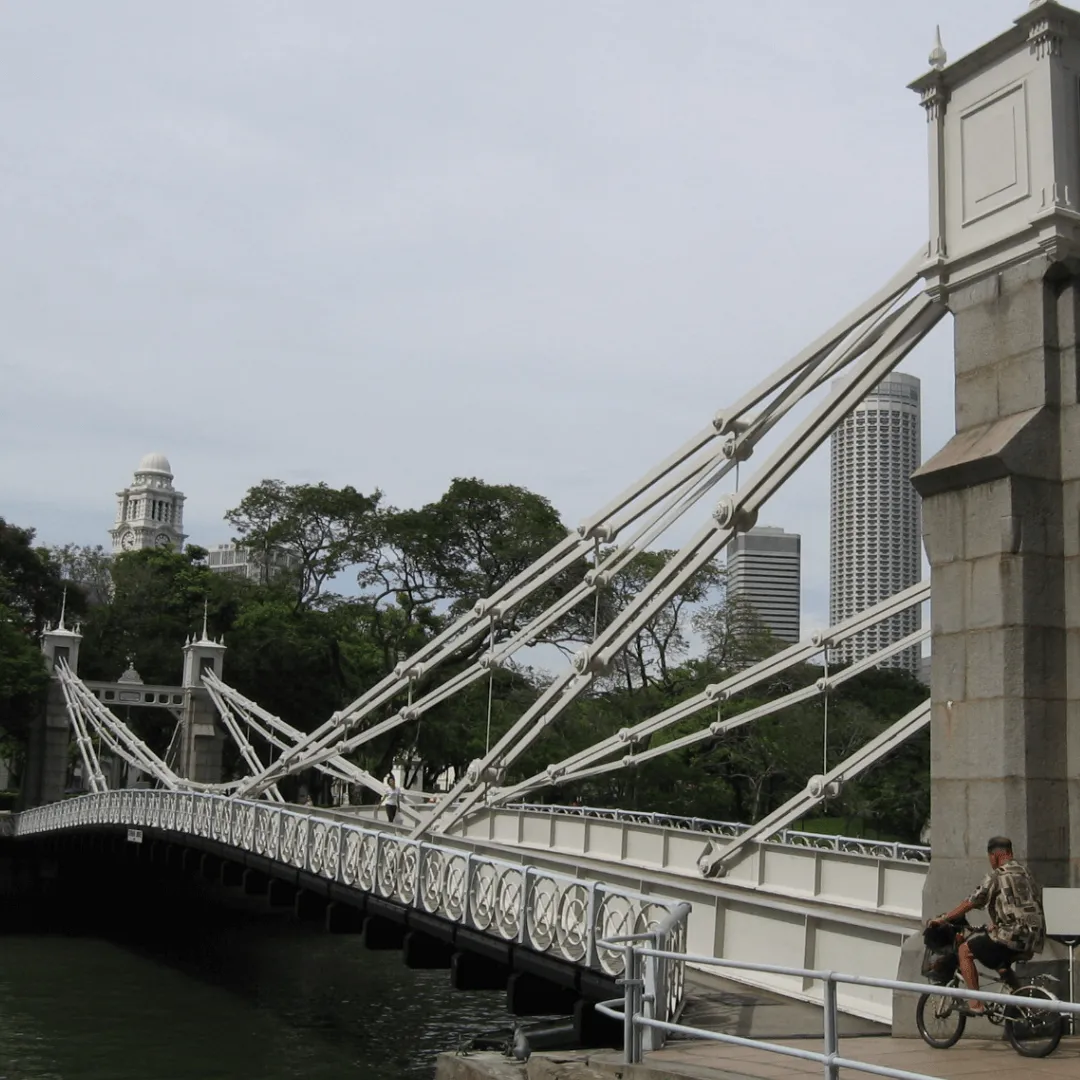
Stop 6: Cavenagh Bridge
Spanning the Singapore River with elegant suspension struts between the Empress Place and Fullerton Building (currently Hotel), Cavenagh Bridge is one of the witnesses of Singapore`s eventful history. This is the only bridge to have survived intact in its original form since construction in 1869, when it replaced its rudimentary pedestrian predecessor. Initially known as Edinburgh Bridge, called so to commemorate the visit by Duke of Edinburgh, it was eventually renamed in honor of Major General William Cavenagh, the last India-appointed Governor of the Straits Settlements. A historic bridge right next to the Fullerton Hotel. Apart from the lovely views up and down the river and the historical significance, which is a big draw to the Cavenagh, there is an undeniably cute bronze family of cats – a cat and two kittens – to be found at the end of the bridge, near the hotel.
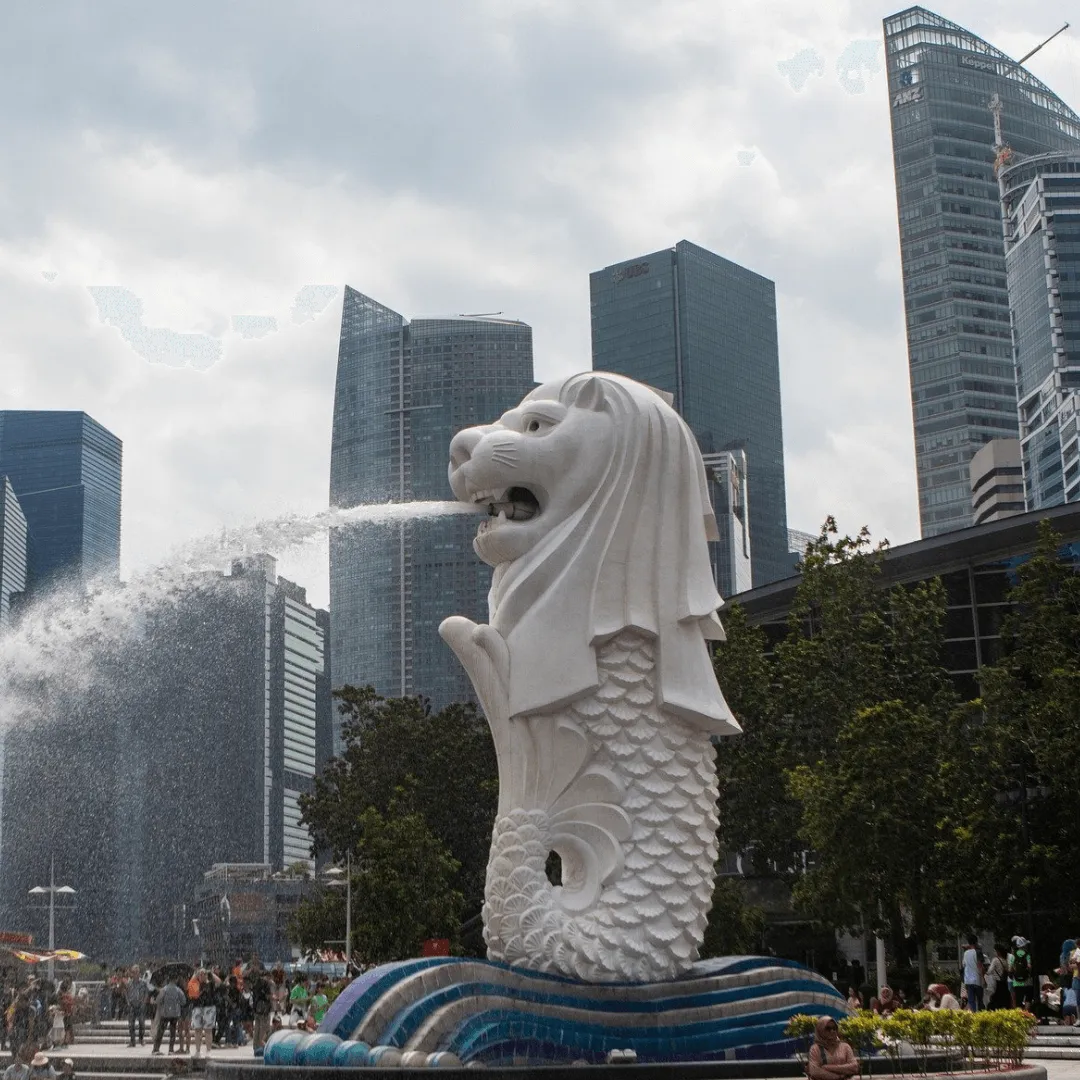
Stop 7: Merlion Park and Statue (must see)
No tour of Singapore is complete without seeing the Merlion and the small park surrounding it that caters well to the tourists visiting the city. An imaginary creature, half fish and half lion, the Merlion has been used as a mascot and national personification of Singapore since 1964. Merlions, or `heraldic sea-lions`, are an established element of Western heraldry, and have been used on the coat of arms of the cities of Portsmouth and Great Yarmouth in the United Kingdom, as well as the City of Manila and the East India Company. While being one of Singapore's most kitschy of attractions, sitting near this 9-meter statue, that spouts water from its mouth, does provide commanding views of the Marina Bay area, as well as of the city skyscrapers and the Singapore Flyer (if standing on its right).

Stop 8: Esplanade – Theatres on the Bay
The structure itself emerged from Singapore`s realization that it needed iconic buildings to keep pace with the competitive international tourist industry – and, as such, can be seen as the Asian rival to the Sydney Opera House, with a fabulous location to support its own unique sense of grandeur. The big question is and will always be whether the Esplanade`s theatres bear more resemblance to Durian fruit, the eyes of a fly, or a microphone. Despite its fruity nickname, “The Big Durians”, which is most popular with the locals, the twin glass domes of the complex do not take their design reference from the tropical fruit, but from traditional Asian reed weavings. The spiky metal sunshades reach seven thousand in number, and with their varying angles and geometries, make the roof-line morph and mutate across the building; however, aside from the visual complexity, they have a practical aspect as well, in that they maximize the natural light while shielding the glass roof from heat radiation – an important concern given Singapore`s location close to the equator. As if that's not enough, it houses a branch of the National Library where you can read digital newspapers, scour through the huge selection of music, dance, and art materials, or watch movies in a spectacular setting. This is indeed a heavenly refuge if you're an art lover or simply need a break from Singapore's humidity and heat.
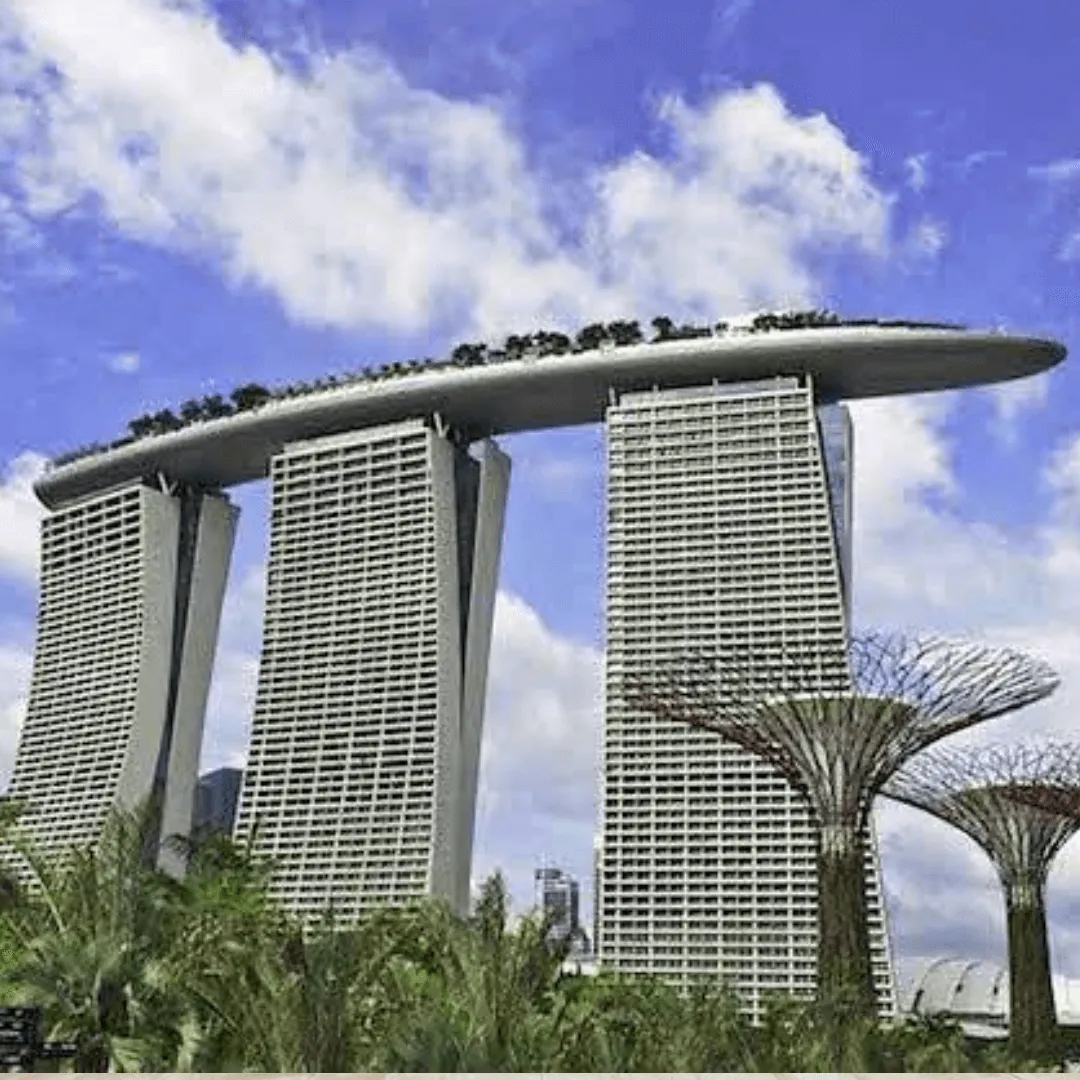
Marina Bay Sands (must see)
Marina Bay is a bay located in the Central Area of Singapore surrounded by the perimeter of four other planning areas, the Downtown Core, Marina East, Marina South and Straits View. The area surrounding the bay itself, also called Marina Bay, is a 360 hectare extension to the adjacent Central Business District. The Formula One Singapore Grand Prix has taken place annually since 2008 on a street circuit adjacent to Marina Bay. Since its construction in 2007, The Float@Marina Bay has hosted events such as the National Day Parade, New Year`s Eve Countdown and Singapore Fireworks Celebrations, and also serves as a spectator stand for the Singapore Grand Prix. The area also hosts the annual i Light Marina Bay, a sustainable light art festival.

